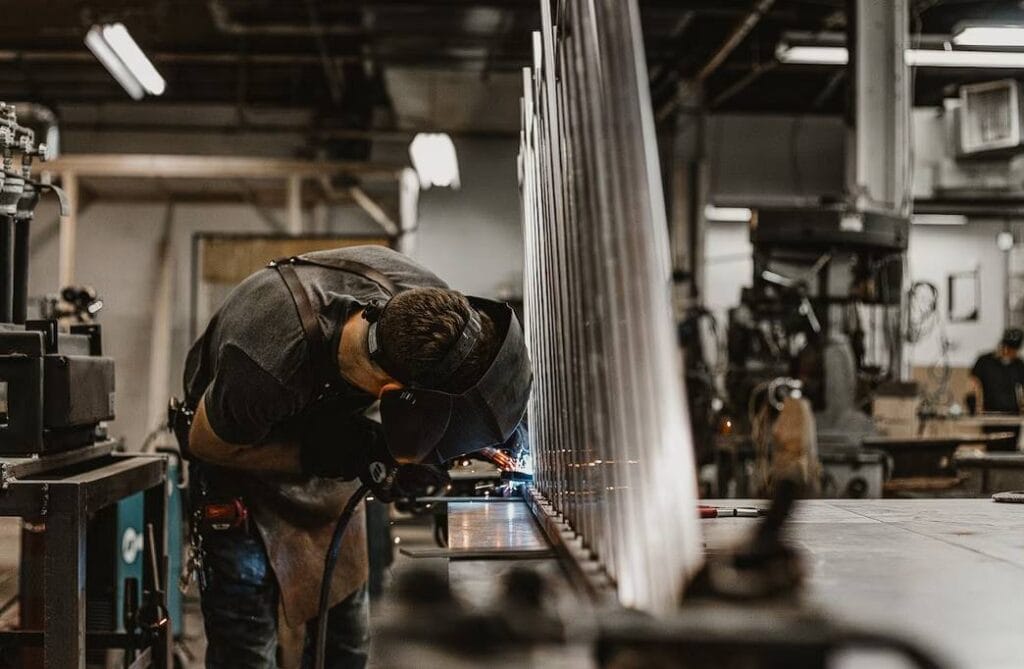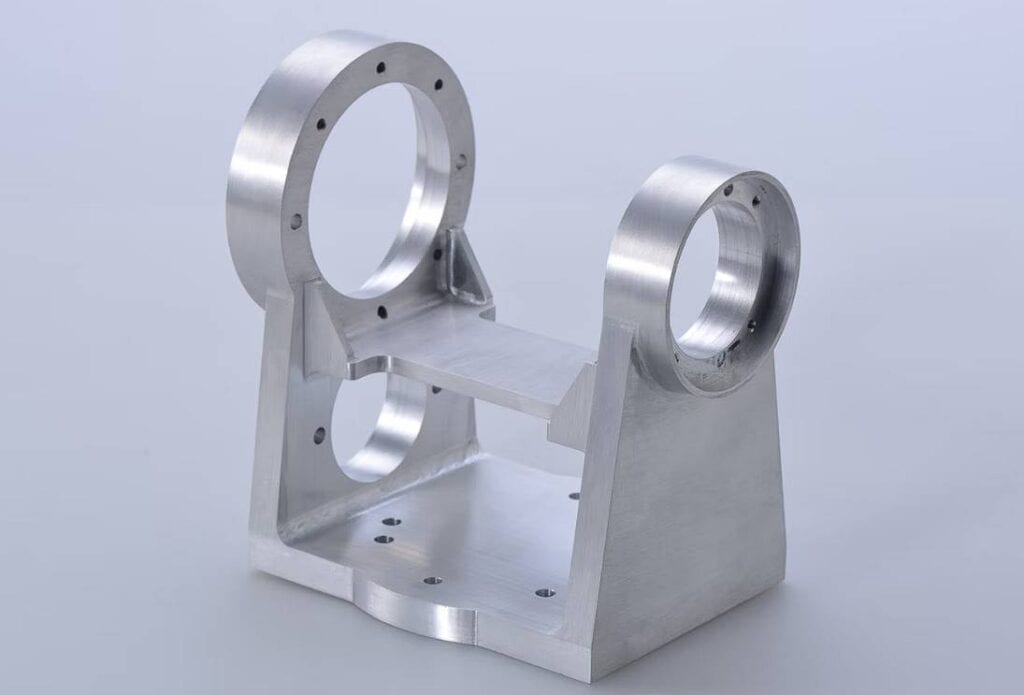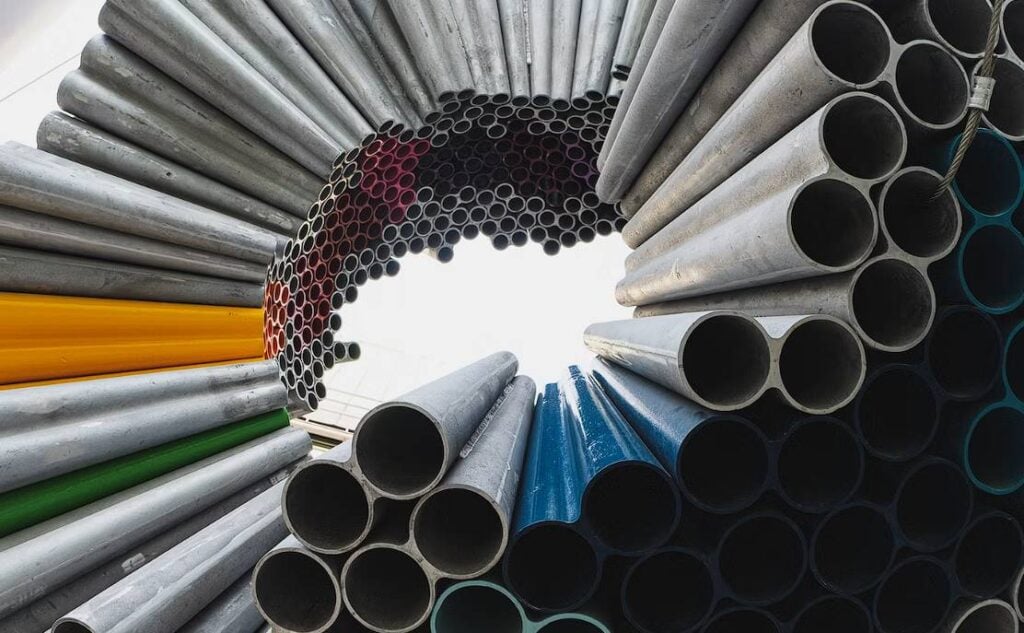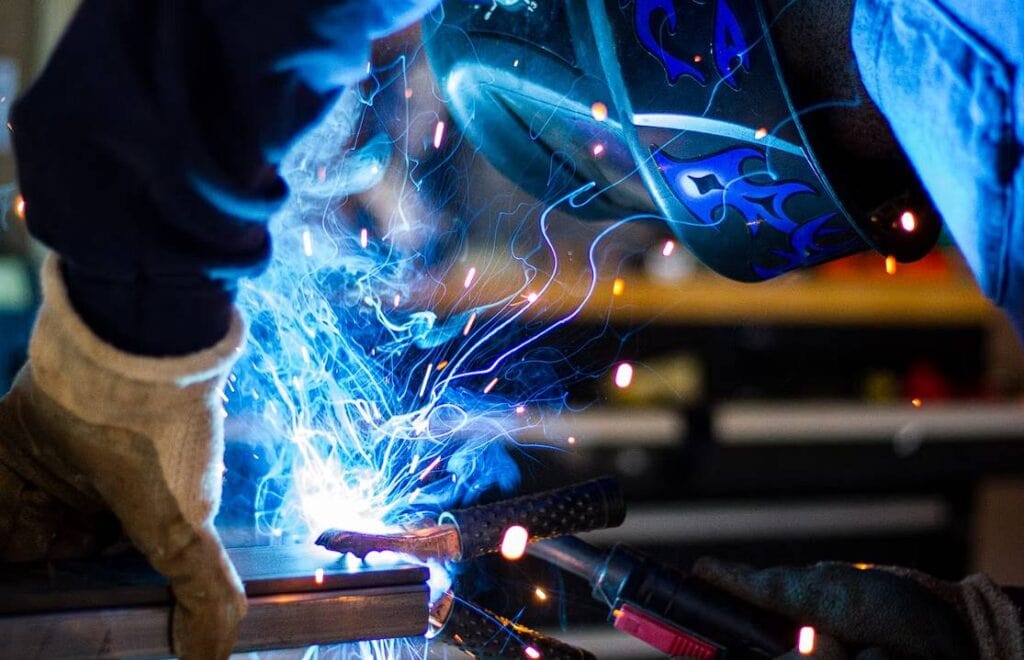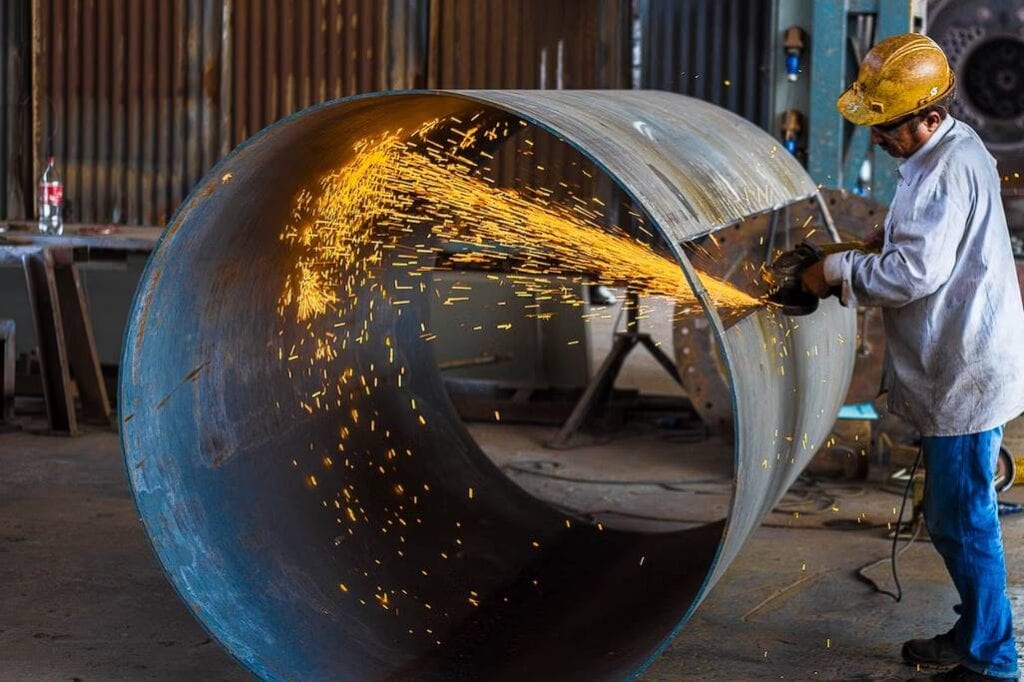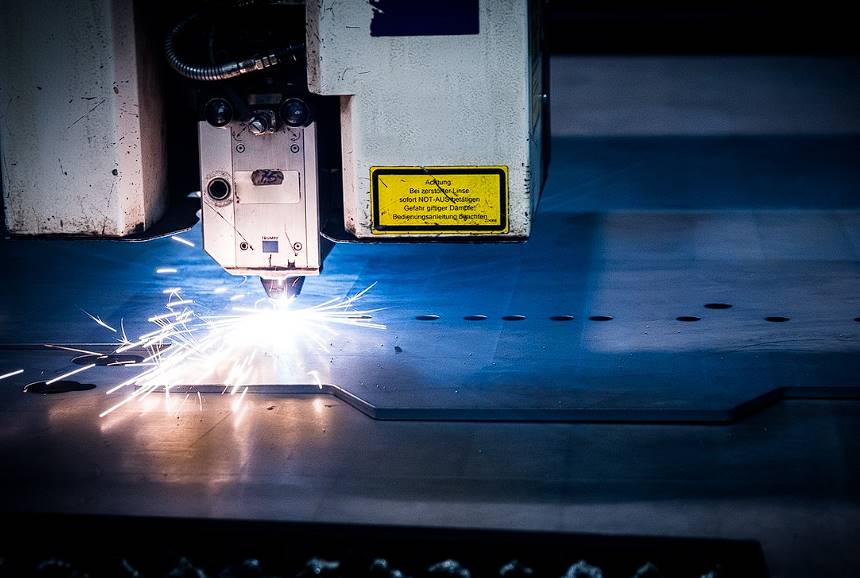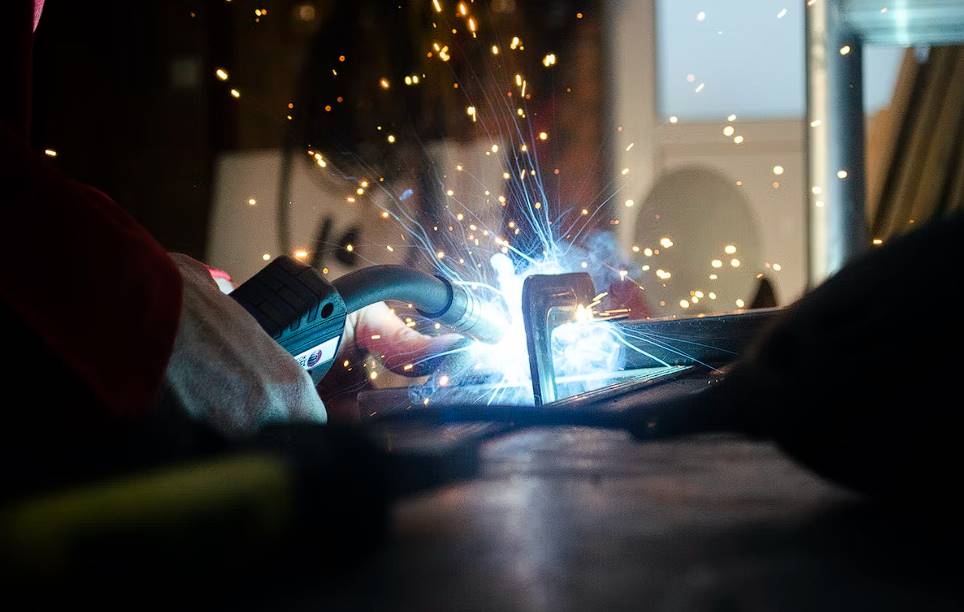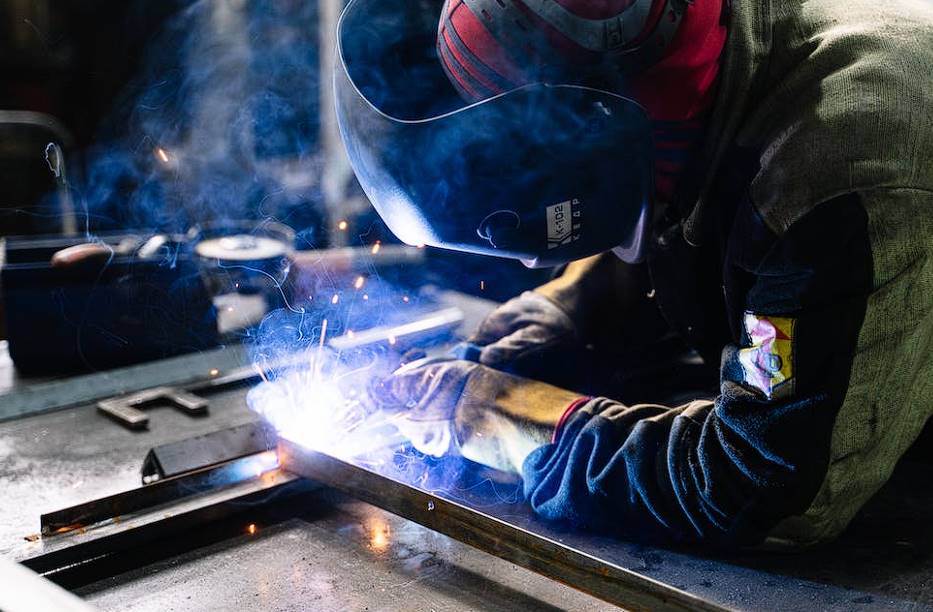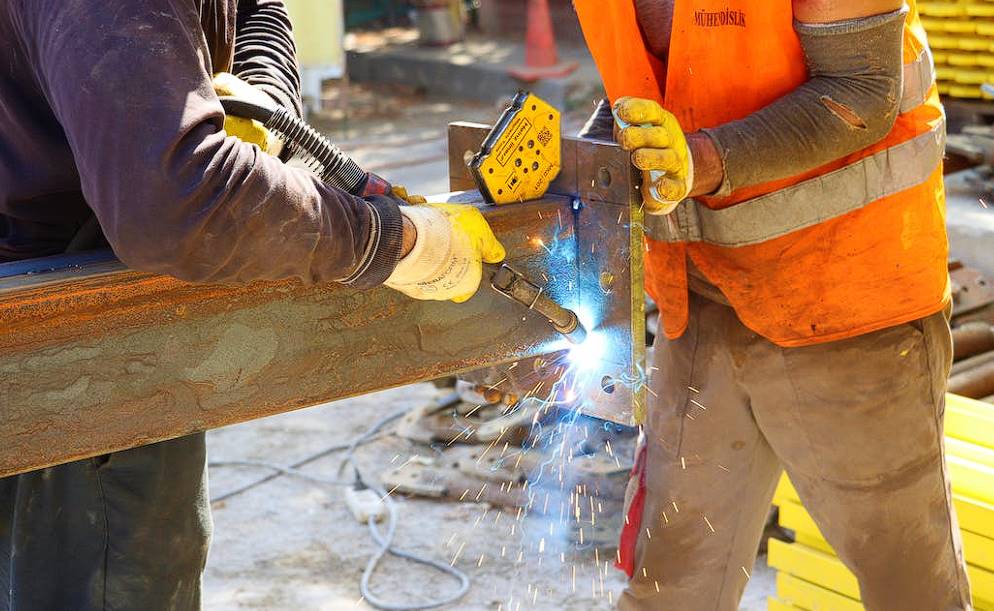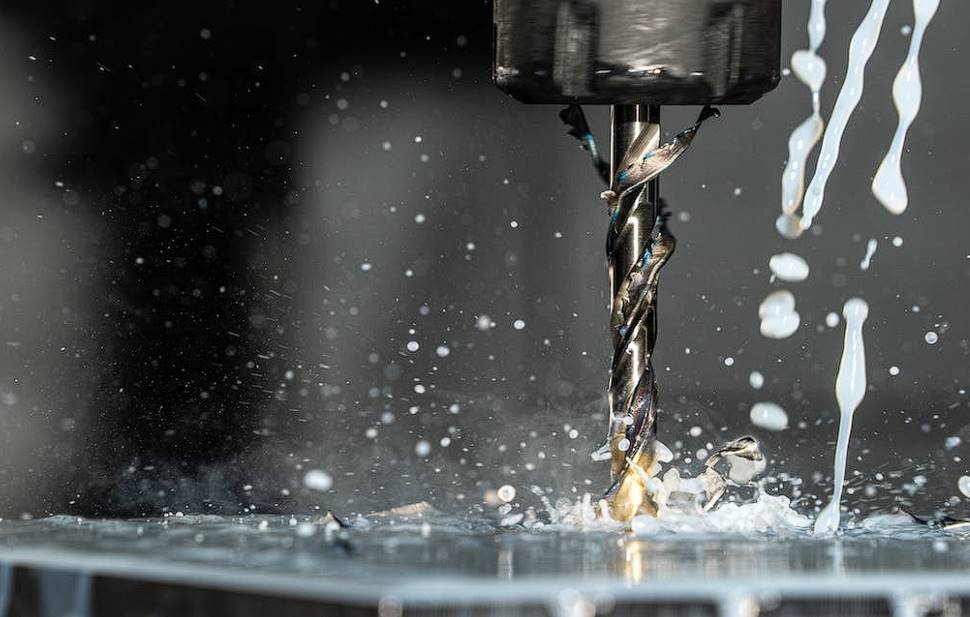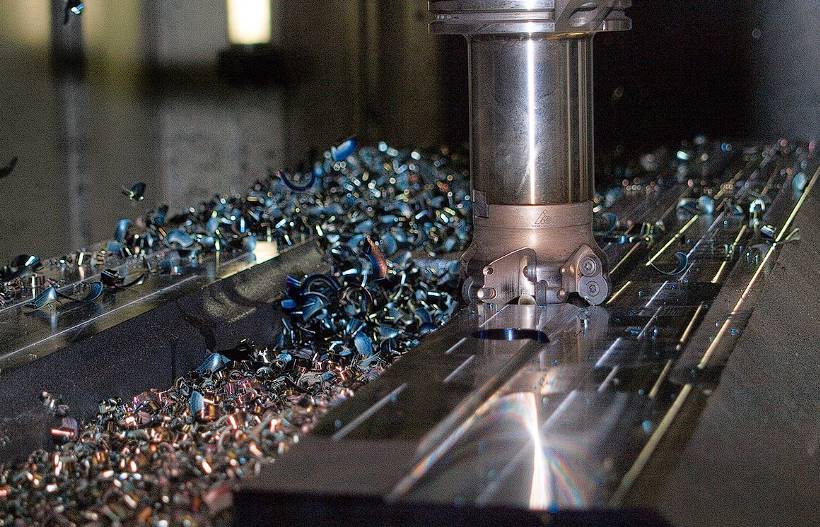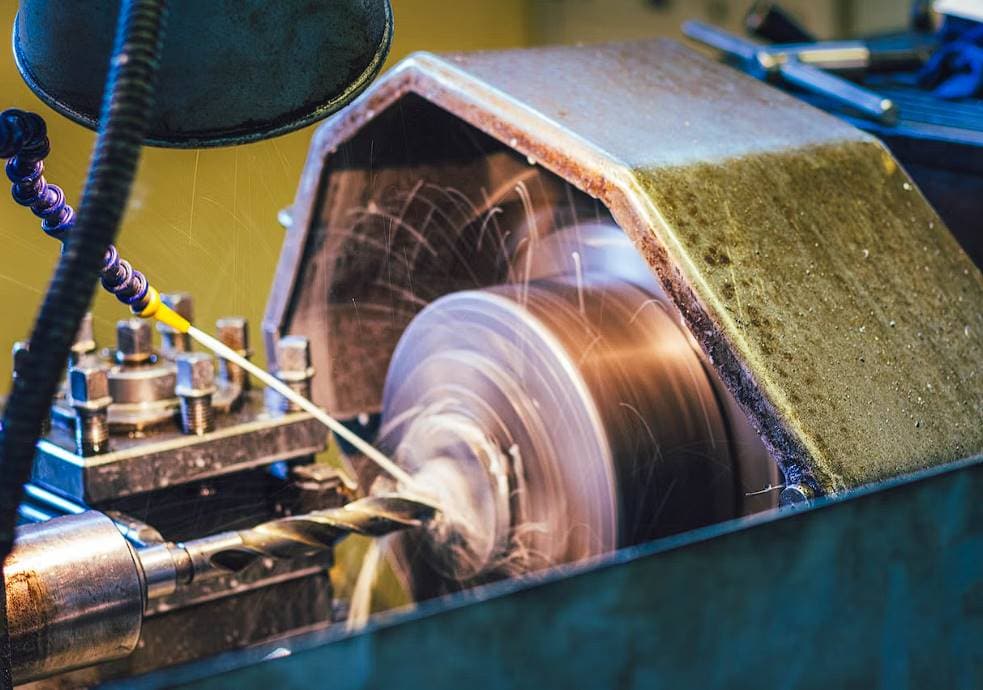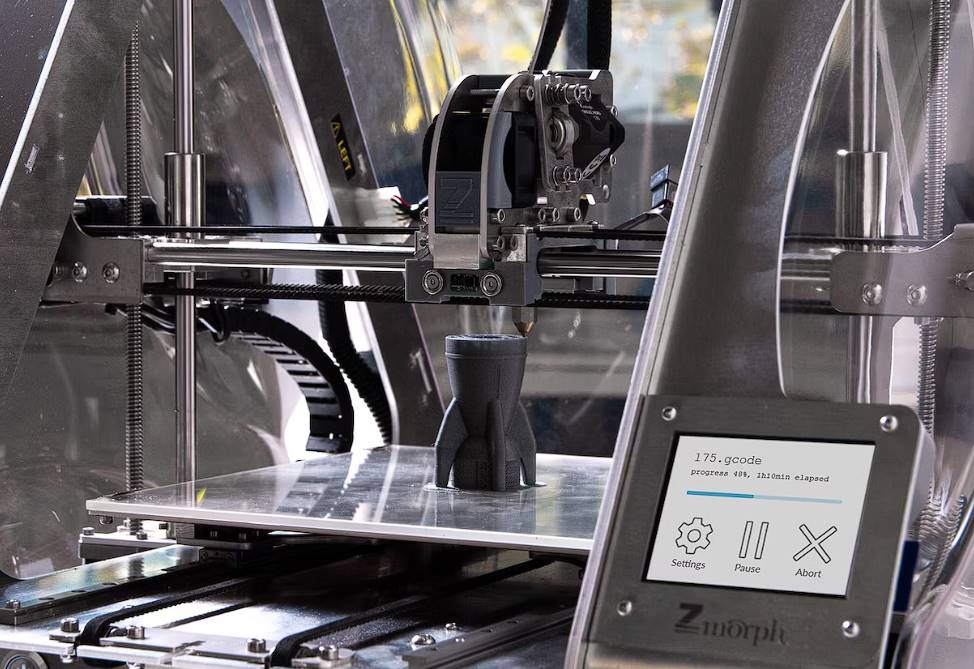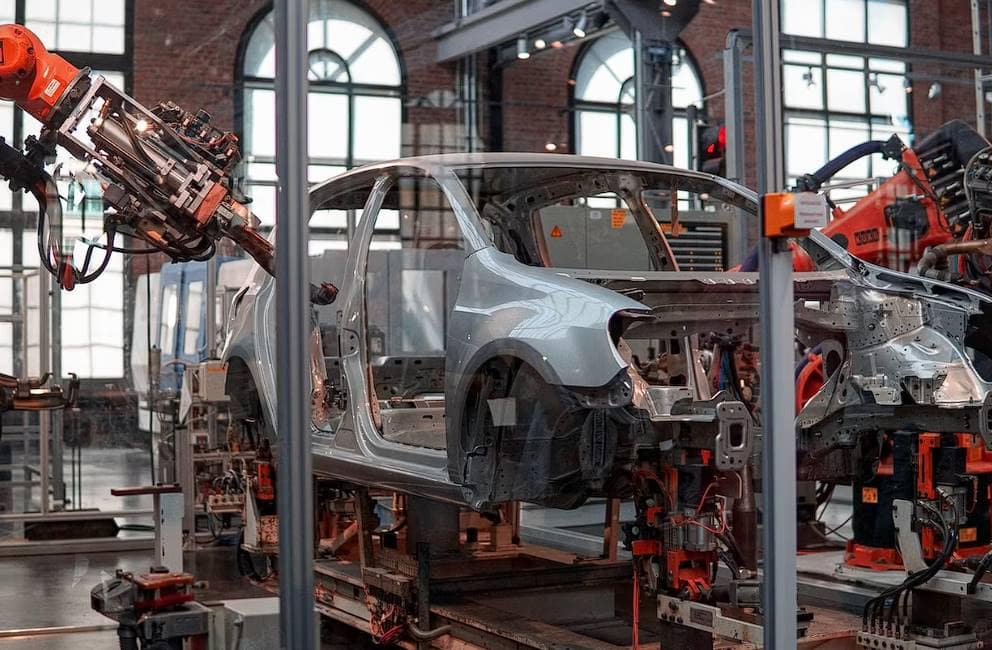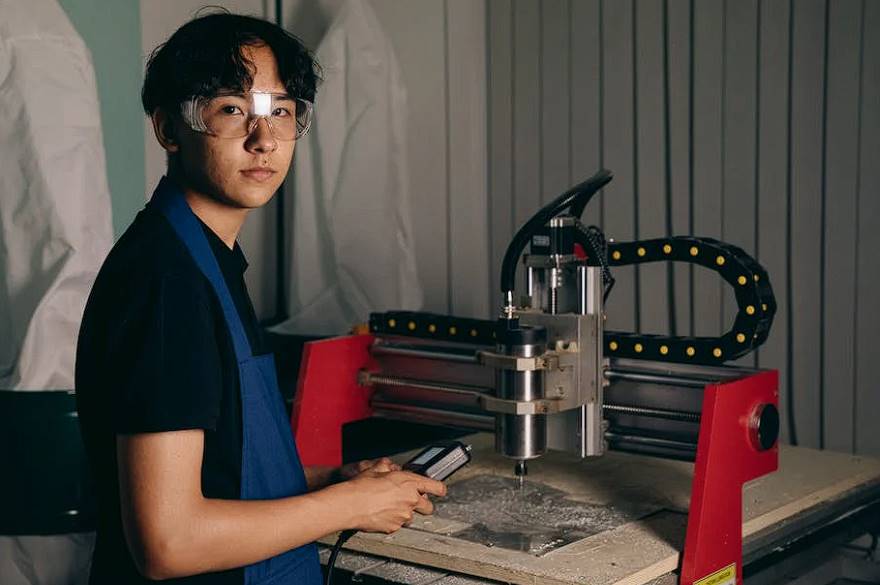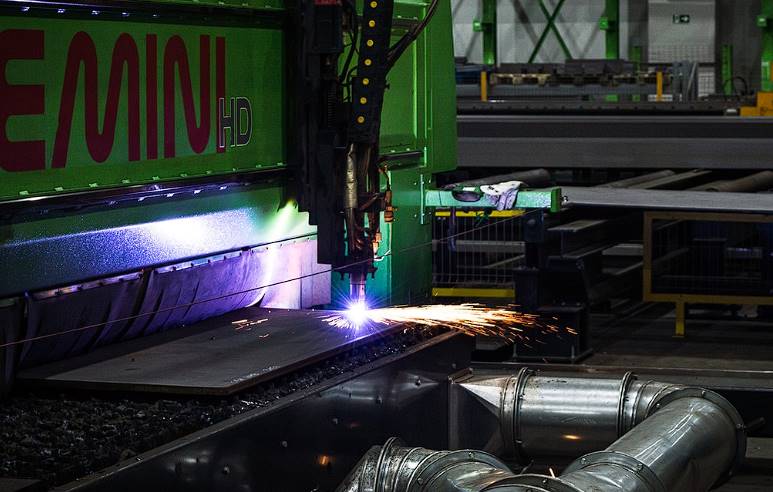It is commonly believed that MIG welding aluminium is difficult. However, this is not true and depends heavily on the state of the aluminium and the welding setup. You get subpar outcomes when you don't put in the time and effort to prepare properly.
When comparing MIG welding to TIG welding aluminium, the former is easier and less time-consuming. If you follow the right steps and make the right preparations, however, the quality of the resulting weld joint is identical.
To that end, this blog will teach you how to prepare this common metal properly, why aluminium is difficult to weld, which shielding gas to employ, how to properly set up your MIG welder, and the proper welding technique.
Why Is MIG Welding Aluminium So Difficult?
Aluminium requires very different MIG welding procedures than steel. Due to its distinct chemical and physical properties, the aluminium melt is especially vulnerable to welding defects that can weaken the weld. A strong, long-lasting weld can be avoided and achieved with the right equipment and know-how. These features consist of:
Metal Thickness
When compared to other melts, like carbon steel, aluminium metal pieces are typically thinner. Burn-through is a common problem when MIG welding this metal. This is a common problem when welding aluminium and can quickly add up if care needs to be taken.
Sensitive To Impurities On A High Level
Water, dirt, and other contaminants can easily find their way into aluminium welds. Therefore, extra precautions must be taken when MIG welding aluminium so that the metal does not become contaminated and weaken the weld. To avoid contamination, use the right shielding gases and filler materials.
Low Melting Point
The melting point of aluminium is around 1,220 degrees Fahrenheit. Aluminium that has been oxidised melts at only 3,700 degrees Fahrenheit. Aluminum's low melting point makes it challenging to work with in comparison to steel, which has a melting point of between 2,600 and 2,800 degrees Fahrenheit.
Since welding aluminium requires removing the oxide that acts as a shield, the pieces must be thoroughly cleaned first.
High Porosity
Aluminium absorbs hydrogen when heated to a liquid state, making it extremely vulnerable to contamination. When hydrogen is part of a melt, it tends to crystallise when it cools. As a result, aluminium becomes porous due to the formation of bubbles. The weld created with other metal alloys is not strong enough to last.
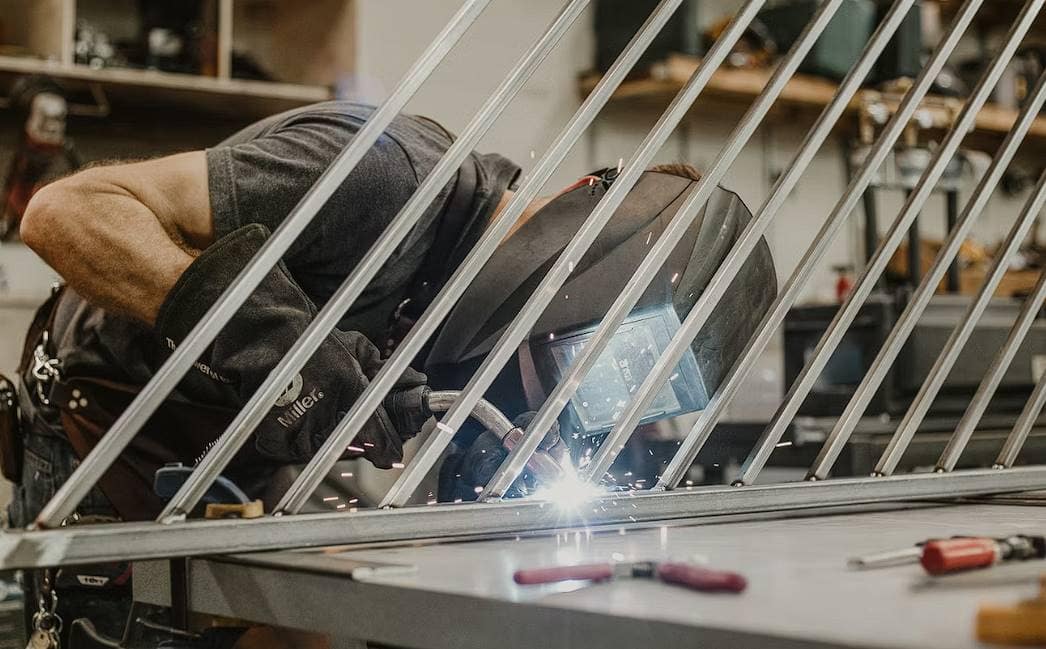
Setting Your MIG Welder Correctly For Aluminum
The correct voltage for spray transfer is just one of many variables that must be adjusted for successful MIG welding of aluminium.
To help you avoid common problems, let's go over each setting on your MIG welder and talk about the shielding gas flow rate.
Wire Feed Settings
MIG welding aluminium requires much higher wire feed speeds than mild steel. You can find MIG settings in your welding machine's manual.
You should refer to the user manual if your machine doesn't have a chart on the storage compartment. You can also verify the aluminium welding procedures that your company has approved.
However, if your MIG welder doesn't have a settings chart, you can use a wire feed speed 30-100% faster than the one used for mild steel, as a rule of thumb.
Selecting The Output Amperage
When MIG welding, the amount of amperage produced depends on how quickly the wire is fed through the machine. Welding metal requires more amperage and a deeper penetration the faster the metal moves.
The welder's amperage output will vary depending on the model for a specific wire feed speed. That's why one machine can produce 200A at 400 IPM wire feeding speed and another to produce 180A at the same speed.
The amperage output is also affected by the diameter of the wire. The wire's thickness directly correlates to the current it can carry. So, the wire feeding speed must be greater for a thicker wire to produce the same amperage as a thinner wire.
Spool Or Push-Pull Gun Attachment
Check the manufacturer's website to see if your welder is compatible with a spool or push-pull gun. If you already have a MIG welder and an aluminium welding gun, you can attach everything in accordance with the manufacturer's instructions.
While not always the case, spool or push-pull guns are now commonly used in place of the standard MIG gun. In addition, the spool gun's power cable must be connected to the welding machine's front panel.
However, there are no absolute guidelines, as some manufacturers power the spool gun with the welding lead that also delivers the shielding gas.
Flow Rate Of The Shielding Gas
A high shielding gas flow rate is required for MIG welding aluminium due to the rapid torch movement required.
MIG welding aluminium requires a minimum of 20 cubic feet per hour ("CFH") when using straight argon, while 15 CFH is sufficient for welding carbon steel. However, if your welds are porous, try increasing the flow to around 30 cubic feet per hour.
However, a mixture of argon and helium necessitates an even greater shielding gas flow rate. Due to helium's low density compared to air and argon, a flow rate of up to 50 CFH may be required. However, a mixture of argon and helium necessitates an even greater shielding gas flow rate. Due to helium's low density compared to air and argon, a flow rate of up to 50 CFH may be required.
Aluminum MIG Welding Procedure
Aluminum Surface Cleaning
Cleaning the metal's surface is the first step in MIG welding aluminium. This procedure is essential because it allows you to cut down on environmental contaminants like dust and moisture drastically. The weld would be compromised without the removal of these contaminants. Solvents are the most effective means of cleaning aluminium.
The solvent acetone is one example. This liquid is great for removing moisture vapour and cleaning the aluminium surface of grease and oils. Apply acetone to a shop towel or wet cloth to clean the aluminium and scrub the surface.
Oil Eater and other degreasers are two examples of powerful soaps that work well for this purpose. You can start welding when you finish the procedure and the aluminium pieces are clean and dry.
Remove Oxidised Layer
The melting point of oxidised aluminium is greater than that of pure aluminium. It takes 3,700 degrees Fahrenheit to cause the oxidised layer to melt. To prepare aluminium for MIG welding, peel off the protective coating first. Aluminium surface oxides are easily scrubbed away with a stainless steel wire brush.
However, a degreaser should be used to get rid of impurities before the oxidised layer is scrubbed away. Scrubbing without doing so risks introducing hydrocarbons and other impurities into the metal. Wire brushing off the oxidised layer is also not advised for novice welders.
Alternative techniques for cleaning aluminium from oxides include the use of oxide-removal solutions. Aluminium can be harmed by using too many chemical solutions, so use caution.
Select The Best MIG Welding Filler Material
Several distinct types of welding wire electrodes are sold commercially. It's important to consider your welding requirements and preferences carefully before settling on a specific variety. There is a special type of wire electrodes made for MIG welding aluminium. Welding aluminium metals can cause flaws like porosity, but this unique design eliminates the need to worry about that happening.
The filler metals ER4043, ER5183, ER4047, and ER5356 perform exceptionally well when MIG welding aluminium. The most popular and widely sold electrodes are the ER4043 and ER5356.
However, ER4043 is much softer than ER5356 electrodes, so it is the material of choice for auto body repair. When deciding on a filler material, you must take into account the base material you will be welding.
Choose Shielding Gas
When MIG welding aluminium, choosing the right shielding gas is essential for protecting the weld. These gases prevent the weld from being tainted by hydrogen, oxygen, and nitrogen in the atmosphere. High porosity, brought on by gas bubbles on the weld, is the result of using the wrong shielding gas.
Although flux core MIG wires and other special MIG electrodes can be used without shielding gas, in most cases, gas is necessary to prevent impurities from forming on the aluminium's surface during welding.
Argon and argon-helium mixtures are the most common shielding gases for aluminium metal-inert gas welding (MIG). Combine helium and argon for use with aluminium in its thicker sections. Nevertheless, oxygen and carbon dioxide gases are not suitable substitutes since they will oxidise the molten weld and cause damage.
Preheat The Metal
Aluminium can be preheated before welding to eliminate distortion at the joint. Although this step isn't strictly required, it does help prevent welding cracks in aluminium welds. However, keeping the heat below 230 degrees Fahrenheit would be best.
Track welds placed before and after the weld zone help expedite the preheating procedure. When working with thicker aluminium sheets, preheating is essential. Common welders will likely need more heat to weld thick aluminium sheets successfully. For this reason, induction heaters could be used for preheating.
When preheating aluminium metal sheets, induction heating systems are among the most secure and dependable pieces of machinery available. These heaters feature a coil-based design. These systems offer improved temperature regulation over torches because they don't rely on an open flame.
Aluminium MIG Welding Tips And Tricks
Some helpful hints for MIG welding aluminium are provided below.
Use The Proper Filler Material.
A number of filler materials stand out for their superior performance while MIG welding aluminium. Copper brazing, nickel silver sheets, bronze wire, and brass shim stock are all excellent options. These components excel when used in conjunction with consumable wire electrodes, especially when forming T-joints without backing bars.
Their superior durability over mild steel makes them an excellent choice for protecting against flaws like cracking. These filler materials have the qualities needed to overcome the difficulties of aluminium welding, allowing welders to produce flawless welds. Their sturdy qualities add to the welded joints' overall reliability and longevity.
Cleanliness Is Essential.
The metal's natural oxidation propensity must be considered when welding with aluminium. Before welding, thorough cleaning of the surface is essential for best results. A stainless-steel wire brush is an effective method for cleaning the aluminium surface and removing the oxide layer.
Welders can greatly improve their welds' quality and reduce porosity by taking such care in metal preparation. Careful cleaning prior to welding not only improves base-metal-to-filler-material fusion but also results in more durable aluminium welds.
Use Appropriate Joint Design Methods.
Joint design methods must be carefully selected when joining metals of varying qualities. This choice lessens the likelihood of oxidation and corrosion, resulting in a secure and long-lasting connection between the various metal parts. Maintaining the integrity of the linked metals and avoiding future problems depends heavily on the joint design, which must be carefully considered.
Use A Brush Made Of Aluminium Wire.
Using aluminium wire brushes to remove rust or corrosion from metal surfaces before welding is the best option. It is especially important to do this when dealing with iron-rich filler materials.
Aluminium wire brushes allow welders to thoroughly scrub away any rust or oxide layers, leaving behind a smooth, unblemished surface. This careful preparation is crucial for producing high-quality welds because it improves the base metal's ability to adhere to and fuse with the filler material. By getting rid of rust, welders can make joints that last longer and are less likely to fail due to structural weaknesses.
Increase The Voltage To Achieve Greater Penetration.
Using higher voltages during welding makes deeper material penetration possible, which in turn reduces the likelihood of porosity. The penetration can be as much as 50% deeper than standard methods. However, care must be taken and the voltage adjusted appropriately to avoid the unintended burning through of metal sheets.
Welders can find the sweet spot between optimal penetration and workpiece protection by adjusting the voltage. This fine-tuning protects the weld and guarantees the durability and structural stability of the linked metal sheets.
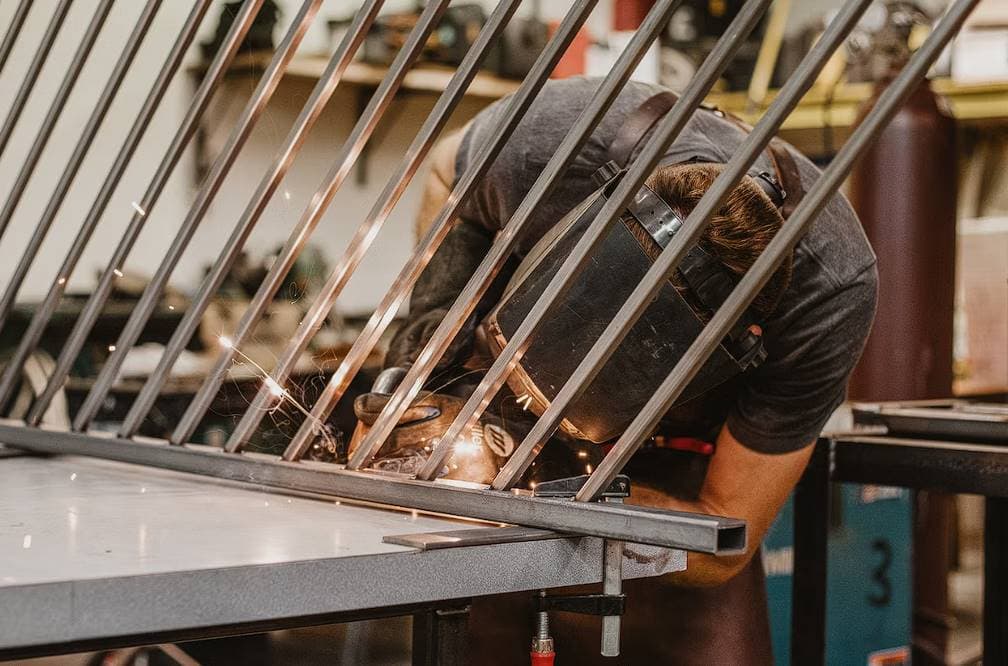
Weld In Short Bursts
Aluminium can easily become too hot during welding, so it's best to use short, intermittent passes rather than one long one. By allowing the metal to rest and cool off between welds, this technique reduces the likelihood that the metal will become overheated and warp.
This method prevents the buildup of excessive heat that could otherwise weaken the weld and the aluminium component. To avoid the problems arising from overheated aluminium, welders can improve control of the welding process by limiting the amount of heat applied and providing brief cooling intervals.
After Welding, Remove The Wire.
The feeder wire must be quickly disconnected at its base when letting go of the gun's trigger. Leaving the wire in the gun after welding is not a good idea. The weld quality decreases as the wire cools because it matters within the weld puddle.
By quickly pulling the wire out of the gun, welders keep it from cooling within, which in turn reduces the spatter. This preventative step improves the quality and appearance of the finished weld by reducing the amount of splatter that occurs during the welding process. The improved welding quality and reduced cleanup time after welding are both benefits of this extra effort.
Conclusion
MIG welding aluminium is often considered difficult due to its unique chemical and physical properties. The melting point of aluminium is around 1,220 degrees Fahrenheit, making it more susceptible to welding defects. To avoid contamination and weaken the weld, it is essential to use the right shielding gases and filler materials.
Aluminum's low melting point makes it challenging to work with compared to steel, which has a melting point between 2,600 and 2,800 degrees Fahrenheit. To ensure a strong, long-lasting weld, it is crucial to set up the right equipment and know-how. The correct voltage for spray transfer and shielding gas flow rate are essential for successful MIG welding of aluminium.
Wire feed settings for MIG welding aluminium require higher speeds than mild steel. The amperage output depends on the speed of the wire fed through the machine and the diameter of the wire. The spool or push-pull gun attachment is also crucial, and the power cable must be connected to the welding machine's front panel.
A high shielding gas flow rate is required for MIG welding aluminium due to the rapid torch movement required. A minimum of 20 cubic feet per hour (CFH) is required for straight argon, while 15 CFH is sufficient for welding carbon steel. However, a mixture of argon and helium necessitates an even greater flow rate.
The first step in MIG welding aluminium is aluminum surface cleaning, which removes environmental contaminants like dust and moisture. Solvents like acetone and oil eaters are effective for cleaning aluminium. The melting point of oxidised aluminium is greater than that of pure aluminium, and it takes 3,700 degrees Fahrenheit for the oxidized layer to melt. Scrubbing the oxidized layer is essential, but using a degreaser or oxide-removal solutions is advised.
Choosing the best MIG welding filler material depends on the welding requirements and preferences. A special type of wire electrode is made for MIG welding aluminium, which eliminates the need for flaws like porosity. MIG welding aluminium is a highly effective process, with filler metals like ER4043, ER5183, ER4047, and ER5356 being the most popular. The base material used for auto body repair is softer than ER5356 electrodes, making it the preferred material for welding. Shielding gas is essential for protecting the weld from hydrogen, oxygen, and nitrogen in the atmosphere. Common shielding gases include argon and argon-helium mixtures.
Preheating the metal is crucial for preventing welding cracks in aluminium welds, but keeping the heat below 230 degrees Fahrenheit is best. Induction heaters can be used for preheating, but it is not strictly required.
To ensure the best results, use the proper filler material, clean the surface thoroughly, and use appropriate joint design methods. Use aluminium wire brushes to remove rust or corrosion from metal surfaces before welding, resulting in more durable joints. Increase the voltage during welding to achieve greater penetration, reducing the likelihood of porosity.
Weld in short bursts to prevent overheating and warping. This technique allows the metal to rest and cool off between welds, reducing the likelihood of overheating and reducing the buildup of excessive heat. After welding, disconnect the feeder wire at its base and remove it to prevent splatter and improve welding quality.
Content Summary
- MIG welding aluminum is not as difficult as commonly believed.
- Proper preparation is crucial for achieving high-quality welds.
- MIG welding aluminum is easier and less time-consuming than TIG welding.
- Aluminum welding requires different procedures due to its unique properties.
- Metal thickness and the risk of burn-through are important considerations.
- Aluminum is sensitive to impurities and requires extra precautions.
- Aluminum has a lower melting point compared to steel.
- Porosity is a common issue in aluminum welding due to hydrogen absorption.
- Proper setup of the MIG welder is essential for successful aluminum welding.
- Wire feed speed must be adjusted for aluminum welding.
- Output amperage depends on wire feed speed and wire thickness.
- Spool or push-pull gun attachment may be necessary for aluminum welding.
- Shielding gas flow rate should be higher for aluminum welding.
- Cleaning the aluminum surface is crucial before welding.
- Oxidized layer must be removed before welding aluminum.
- Choosing the right filler material is important for aluminum welding.
- Shielding gas selection is crucial for protecting the weld.
- Preheating the metal can help prevent welding cracks.
- Tips and tricks for successful aluminum MIG welding.
- Using the proper filler material enhances the quality of welds.
- Thorough cleaning of the metal surface improves weld quality.
- Appropriate joint design methods ensure a secure connection.
- Using an aluminum wire brush for cleaning is recommended.
- Increasing voltage allows for greater penetration in welding.
- Welding in short bursts prevents overheating of aluminum.
- Removing the wire from the gun after welding improves weld quality.
- Acetone is an effective solvent for cleaning aluminum surfaces.
- A stainless steel wire brush is useful for removing oxide layers.
- Filler materials like copper brazing and nickel silver sheets perform well.
- Argon and argon-helium mixtures are commonly used shielding gases.
- Preheating aluminum helps prevent welding cracks.
- Joint design methods impact the integrity of the connected metals.
- Using an aluminum wire brush reduces the risk of rust and oxide layers.
- Increasing voltage allows for deeper material penetration in welding.
- Welding in short bursts prevents overheating and warping of aluminum.
- Removing the wire after welding reduces spatter and improves weld quality.
- Cleaning the metal surface reduces porosity in the weld.
- Thorough preparation leads to more durable aluminum welds.
- Joint design is crucial for avoiding oxidation and corrosion.
- Using an aluminum wire brush improves adhesion and fusion in welding.
- Higher voltage allows for deeper penetration without burning through.
- Welding in short bursts prevents overheating and warping of aluminum.
- Removing the wire after welding reduces spatter and improves appearance.
- Feeder wire should be disconnected quickly after welding.
- Leaving the wire in the gun after welding decreases weld quality.
- Quick removal of the wire reduces spatter and cleanup time.
- Cleaning the aluminum surface reduces the risk of contamination.
- Proper filler material selection ensures flawless welds.
- Shielding gas selection is crucial for protecting against impurities.
- Preheating the metal prevents welding cracks and distortion.
Frequently Asked Questions
Yes, you can MIG weld aluminium with a regular MIG welder. However, you must make certain adjustments and use the appropriate settings, such as increasing the wire feed speed and selecting the correct shielding gas.
Using a spool gun is not mandatory for MIG welding aluminium, but it can greatly improve the welding process. A spool gun provides better control over the wire feed and reduces the chances of wire tangling or birdnesting.
Yes, you can weld different thicknesses of aluminium together. However, it is essential to adjust your welding parameters to ensure proper heat input and avoid burn-through or lack of fusion.
Before welding aluminium, cleaning the surface using a stainless-steel brush or a dedicated aluminium cleaning brush is recommended. This helps remove the oxide layer and any contaminants that could affect the quality of the weld.
You cannot use the same filler wire for all aluminium alloys. Each aluminium alloy has different properties, and using the wrong filler wire can lead to weaker welds. Consult the alloy manufacturer's recommendations or a welding expert to select the appropriate filler wire.

